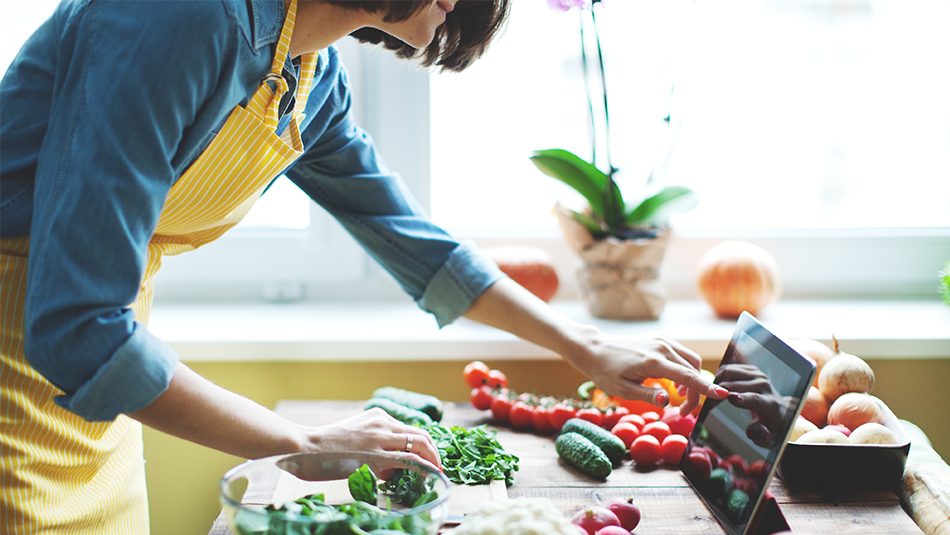
Are Your Online Recipes Optimized?
As a food brand your website undoubtedly includes recipes. Lots of recipes. In fact, they’re likely one of the most popular content sources on your site. But are you making the most of this vital and powerful content? Are your recipes driving traffic and attracting new visitors? Expanding usage occasions? Increasing purchase intent?
You may have noticed that your site traffic plateaued or key performance metrics have stalled. Recipe content pages lend themselves to critical metrics: bounce rate compared to other pages; average page duration; and engagement such as printing, downloading, and/or sharing. If these metrics stopped improving, it might be time to take a closer look.
So what makes recipes such a valuable content play for food brands? And what are some best practices you can quickly adopt to ensure your collection is performing at the highest level?
Make a Fan Out of a Consumer and a Professional
As a powerhouse content feature, good recipes are an invaluable tool for food marketers. Emphasis on good! While mediocre recipes fall flat, a great recipe has the ability to act as a gateway to more engaged site visitors at all levels of the cooking ability spectrum.
When it comes to consumers, recipes provide inspiration for meal planning, spicing up family favorites, and maybe act as a motivator toward better nutrition, health, and fitness goals. For this audience, they’ll move them from consideration to purchase.
On the flip side, it’s important to remember the role recipes play when it comes to foodservice professionals. They’re looking for menu inspiration and new, creative ways to excite their guests with ingredients and flavors that leave a lasting impression. Your recipes can have a huge influence on menu creation which can open up new sales opportunities and put your brand in front of an entirely new set of demographics.
Recipes as Content Require Ongoing Attention
Hands down, recipes have a strong influence on consumer behavior. However, recipes as content require thorough attention to detail. An enjoyable cooking experience begins with a recipe accurate not only in its ingredient list but in its preparation sequence. A minor error not only makes for a bad cooking experience but can also jeopardize your relationship with the consumer.
When fully optimized, a recipe collection offers some key benefits but requires ongoing maintenance that can present challenges if careful attention to detail is not given at the onset.
Benefits of a Great Recipe Collection
Improve SEO and Page Ranking by having high engagement functionality such as printing, downloading, shareability, comment, rating, and rankings enabled.
Increased and Repeat Traffic because recipes encourage continued engagement as consumers revisit recipes or, as you make seasonal updates and release event-based content.
Recipes are Evergreen with long-term applications and shelf life.
Developing a long-term plan taking into account both aspects of recipe creation and maintenance will ensure you’re set-up to reap the short and long-term benefits of this valuable content. As you weigh a new or existing investment, here are some ongoing considerations you’ll want to keep in mind.
On-Going Details To Consider
Investing in Professionally Sourced and Tested Recipes delivers results that will meet your brand’s quality standards.
Careful Attention to Instructions and Ingredient Details is a requirement for successful preparation. Invest in testing prior to release.
Marketing Maintenances such as seasonal updates, promotions, and event-specific recipes help amplify larger brand goals, keeping organic and repeat traffic high.
Long-Term Procurement Efforts to expand recipe acquisitions and sources should be seriously considered and funded.
Best Practices for Optimal Performance
Beyond the audience, how can recipes impact site KPIs? And what about recipe collection functionality? Below is a quick checklist of best practices to help you get the most out of your investment.
Careful Page Design : Recipe pages can be complex with multiple data fields. But a well-conceived page design enables the user to quickly and easily find the information they want. They should be able to view the entire recipe at a glance and quickly locate actionable features such as Share, Print or Download.
Great Photos and Images: No photos = No recipe! Clear, professional images of the process and the finished, plated recipe are crucial. Users and chefs want to know if they’re preparing the dish correctly and what the final presentation should look like.
User Engagement Features : Ratings and rankings are important. Let users engage with the recipes and provide their comments and experiences. Treat this user-generated content (UGC) much like you would social media. Review it and respond when and where appropriate and in a timely fashion.
Cross-Platform Utility: Recipes are valuable and important content for your other digital marketing via social channels, email campaigns, and blogs. Each of these channels has unique audiences and provide a great platform for recipe sharing.
Fast Page Loading: With mobile traffic dominating site analytics, it is imperative to make certain your recipe pages load fast. Accelerated Mobile Pages (AMP) is an especially powerful tool to ensure fast load time for mobile users.
Got All This Covered? Try Taking It One Step Further
You’ve nailed all of the above and now you’re looking for something to take you to the next level. Here are a few ideas currently on our radar but remember, tomorrow is a new day in the digital space and it’s always full of emerging opportunities.
Extend the Reach of your Recipe Content : Why limit your recipes exclusively to your website? There are many opportunities to reach a wider audience by adding them to food-sharing websites. They’ll directly incorporate your recipe content while enticing a large consumer audience seeking new and more exciting recipes. Here’s a look at some of the excellent sites available to you.
Shoppable Recipes : Move your food products closer to the purchase goal by incorporating the functionality of a shopping list created directly from the website’s recipe page. This feature allows the consumer to capture the recipe’s food ingredient items and, while their interest is at its greatest, seamlessly connect to purchase those items. Chicory leads the shoppable recipes technology, reaching an estimated 65 million unique monthly users and has partnered with the likes of Peapod, Tim Inc., and General Mills International. Their easy-to-install JavaScript code allows for segmenting items, geography, retailers, and more to ensure users are to complete the retail purchase they’ve selected.
Go Forward and Prosper
Consumers of your recipes – home cooks and pros – are constantly looking for fresh, new ideas. That’s one of the reasons Tasty.co has taken off like a rocket. And, just two years after being launched has found a spot as one of the top 10 creators of global content. Recognizing the value and significance of recipes as a vital form of content marketing will make your overall website more effective, increase consumer engagement, and efficiently promote your content across more channels.
The great thing about the digital world is that it’s always changing, evolving, and innovating. What might be revolutionary today will likely be old news tomorrow. So stay current, act quickly, and be bold. Especially in the world of food.







